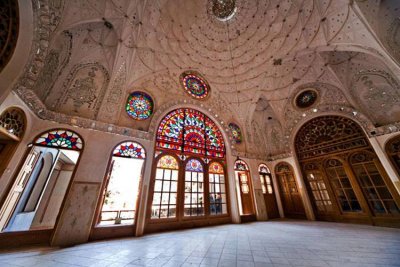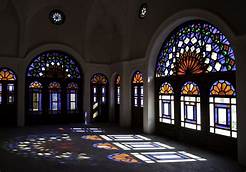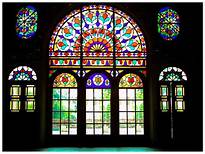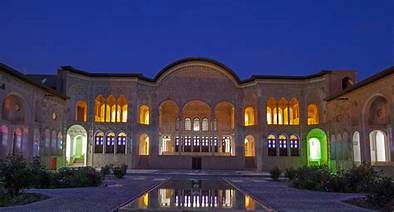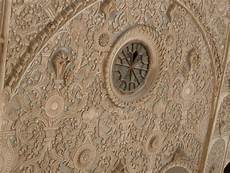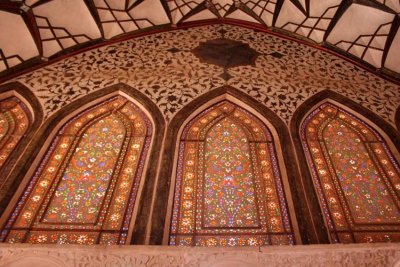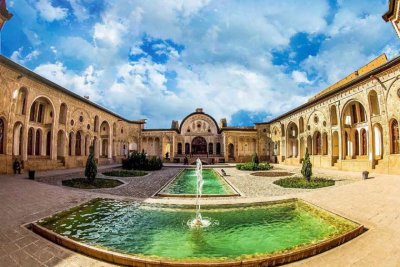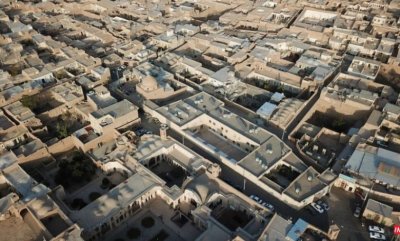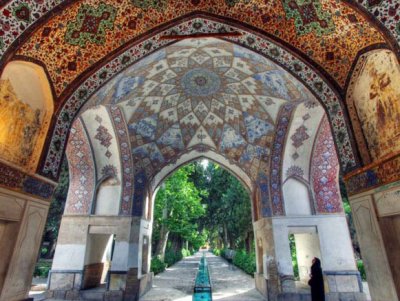History of Tabatabai's house
Tabatabai’s house, like other historical monuments of that time, has the originality of architecture and esign in accordance with the specific culture and climate of the region and luxurious and magnificent decorations. As soon as you step into the porch of this magnificent house, a cool, pleasant breeze will caress your face and draw you into the house. From the stairs in front of you, 20 steps down, you will reach the beautiful and spacious yard of the house. A courtyard whose stunning beauty nails your moments. The beautiful and large pond stretches from one side of the yard to the other, and the goldfish follow each other in the clear water. On either side of the large pond, six octagonal gardens full of beautiful flowers multiply the freshness of the courtyard.
This house is located near the historical house of Boroujerdi and next to the holy shrine of Imamzadeh Sultan Amir Ahmad (this tomb is also a work of art of the ninth and tenth centuries) and because the cornerstone of this house is a person named “Haj Seyed Jafar Tabatabai Natanzi” It is known as Tabatabai’s house.
Tabatabai’s house complex consists of 3 exterior sections and a crew section. Tabatabai’s historical house complex with an area of 4700 square meters has 40 rooms, 4 courtyards, 4 cellars (basement), 3 windbreaks and 2 aqueducts. The architecture of Tabatabai’s house is symmetrical and introverted in the style of veiled and hollow garden architecture. The architecture of the garden pit, ie the garden of the house, is located in a pit. In this way, the building becomes resistant both in terms of strength and earthquake resistance, and that it facilitates water supply to the building; In addition, the moisture of the building is used for plant growth. When the building is in the heart of the soil (that is, in the form of a garden pit), the house is also insulated with heat. The house is neither hot nor cold.
Tabatabai House Architecture
The house consists of four courtyards and a courtyard, the central courtyard belonging to the outer part and the two courtyards belonging to the inner part and one courtyard belonging to the crew.
The inner part of the house includes a simple five-door room in the center and two courtyards on either side, and there are cellars in which the air vents let the air flow, which was the residence of the family of the late Tabatabai. The courtyard on the northwest side is larger and has more rooms and has a separate reception hall. Below the inner part, especially the central room, there is a large crypt that has its own unique characteristics and for various reasons such as the presence of a windbreak, multiplicative roof, the type of materials used in the body, the double wall of the body, the pool that was previously in the center of the crypt The difference in height with the surface of the alley is about 8 to 10 meters, and the cool breeze that enters the basement from the surface of the central courtyard pond has caused a 15 to 20 degree temperature difference between the basement and outside, especially in summe
The exterior of the house includes a large hall (the king’s room) in the center with skylights and colored latticed windows and double-glazed side windows that open and close vertically. The room is decorated with paintings, mirrors, and interesting plasterwork, including gypsum lattice windows that look like delicate lace. Earring rooms are built on both sides of the royal room. In front of the royal room, a porch with interesting mirrors and beds can be seen. On the sides of the Great Hall, two backyards and a skylight have been built symmetrically, which have original paintings and are considered among the works of art of this land. Documents show that Nasser al-Din Shah Qajar’s great painter and painter, Mirza Abolhassan Ghaffari Kashani, nicknamed “Sania al-Mulk", had a close friendship with the owner of the house and family relations, so in honor of his friendship with the late Tabatabai, he performed He has supervised the plastering and painting of this house, and this greatly increases the value and credibility of the decorations of Tabatabai’s house.
